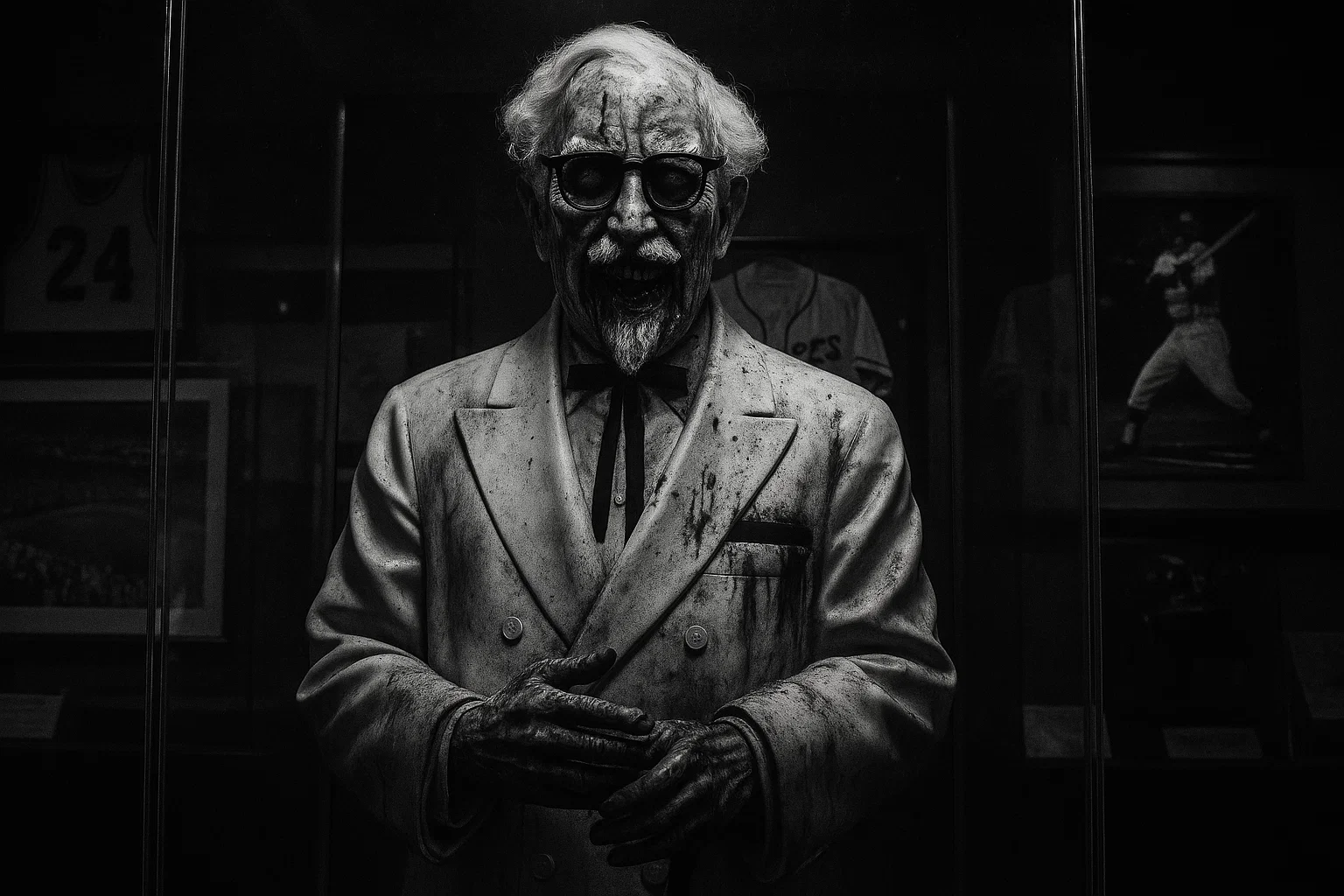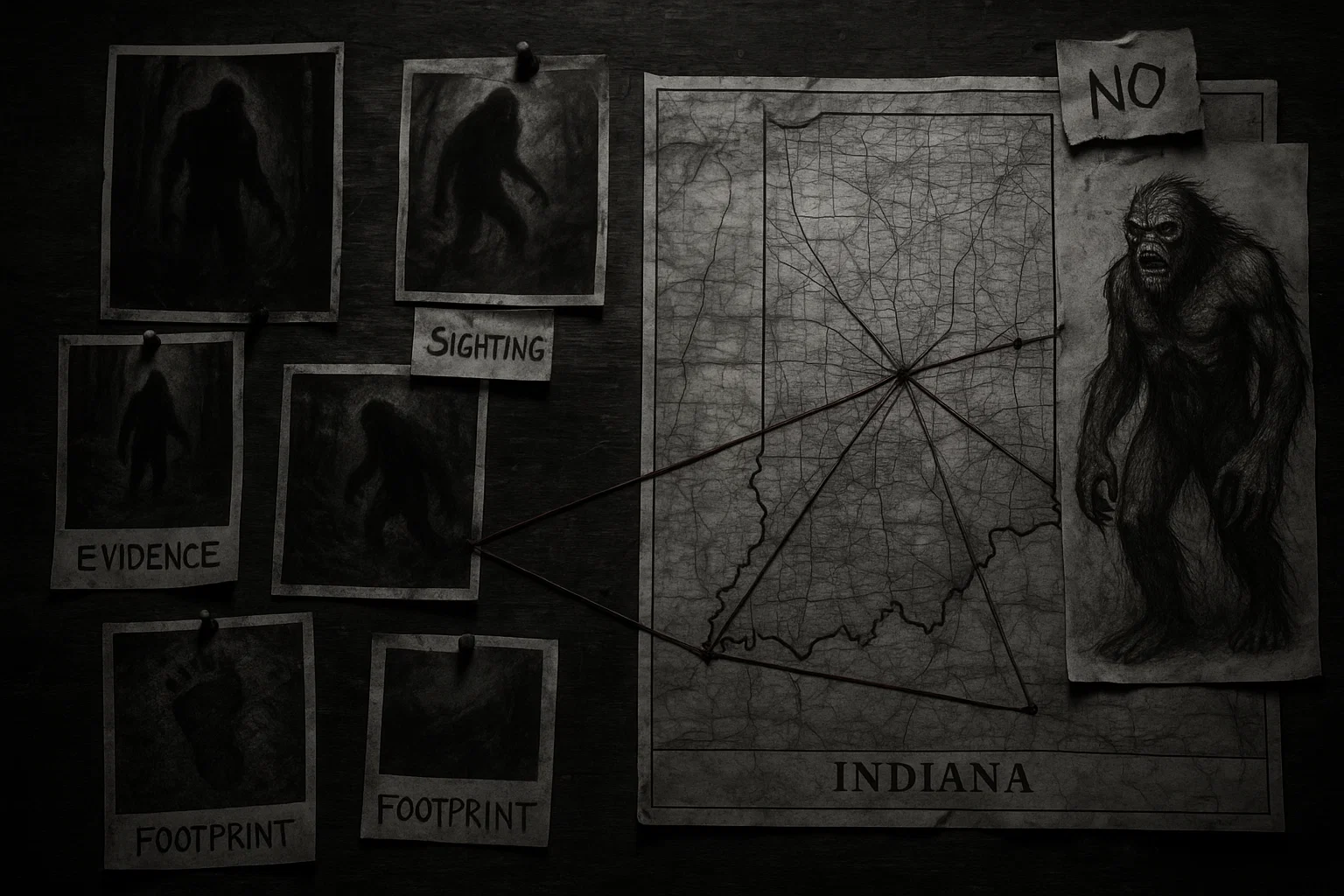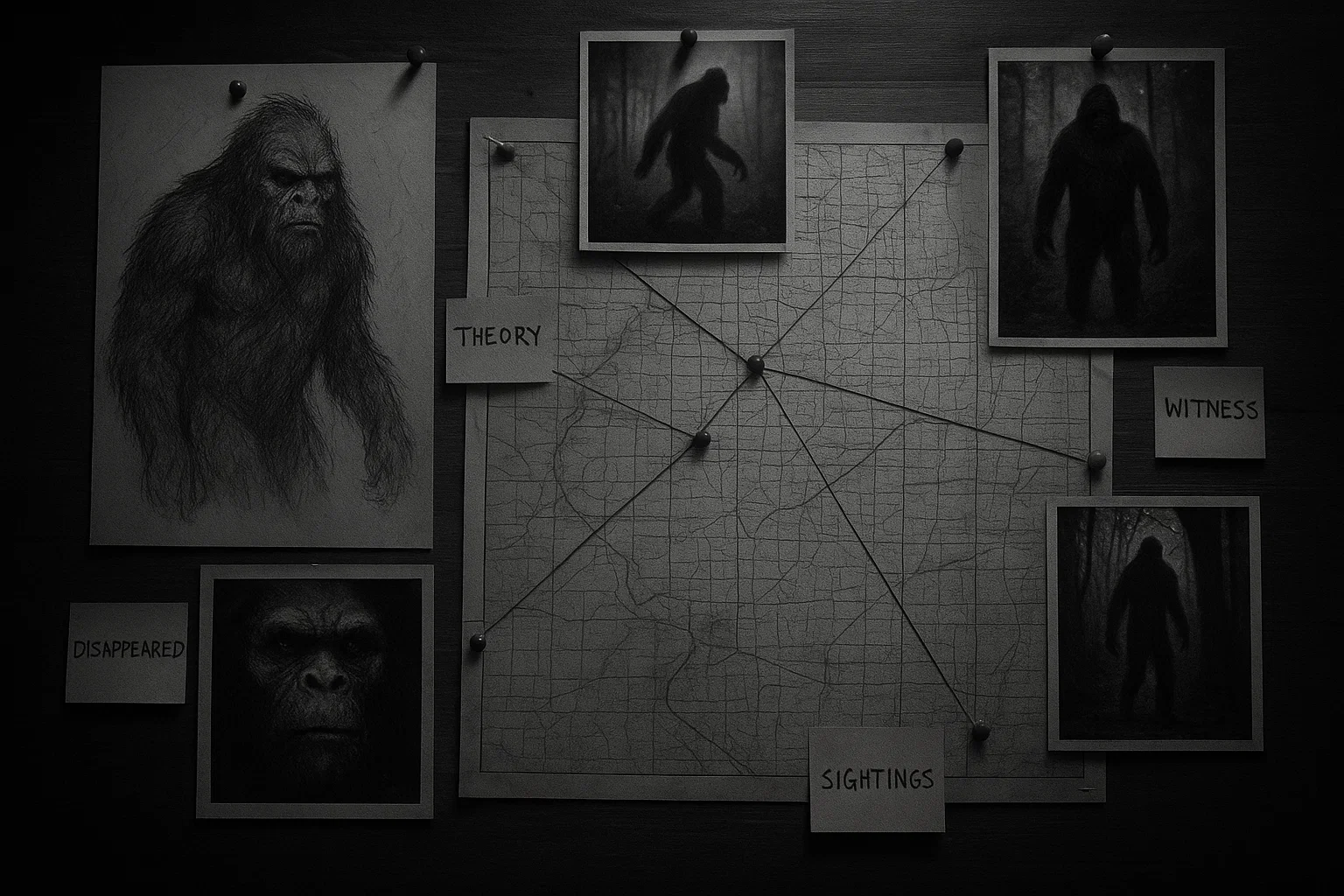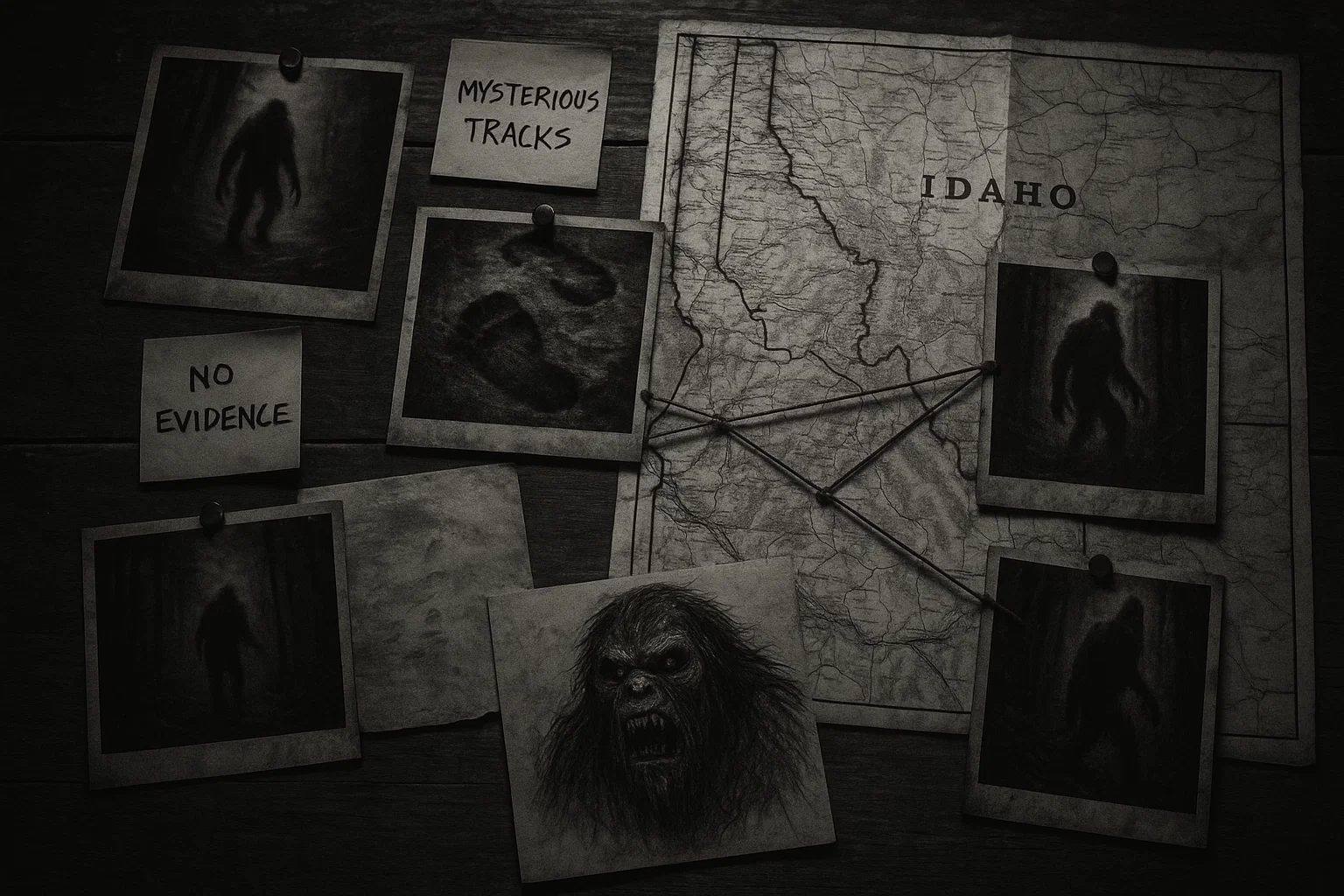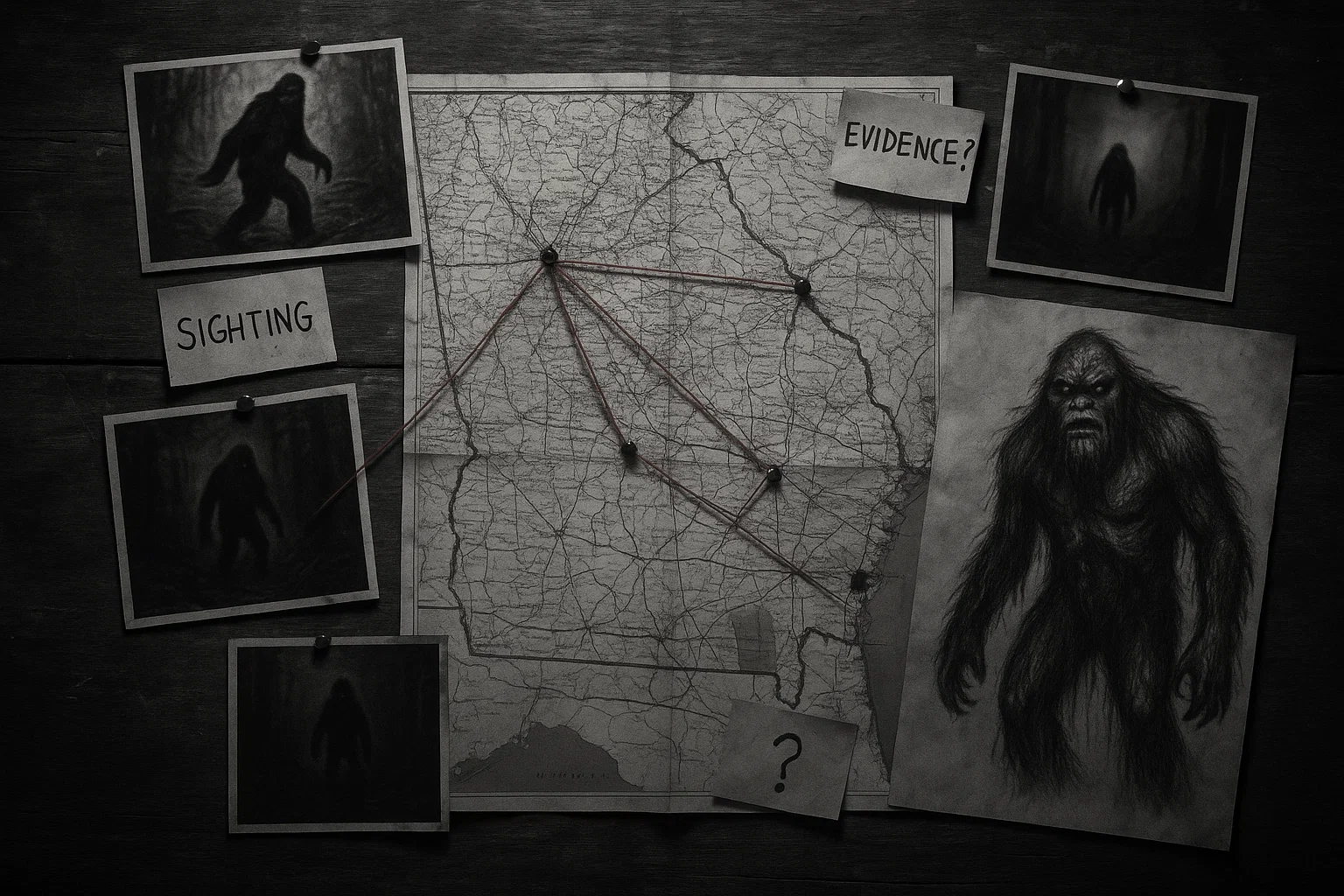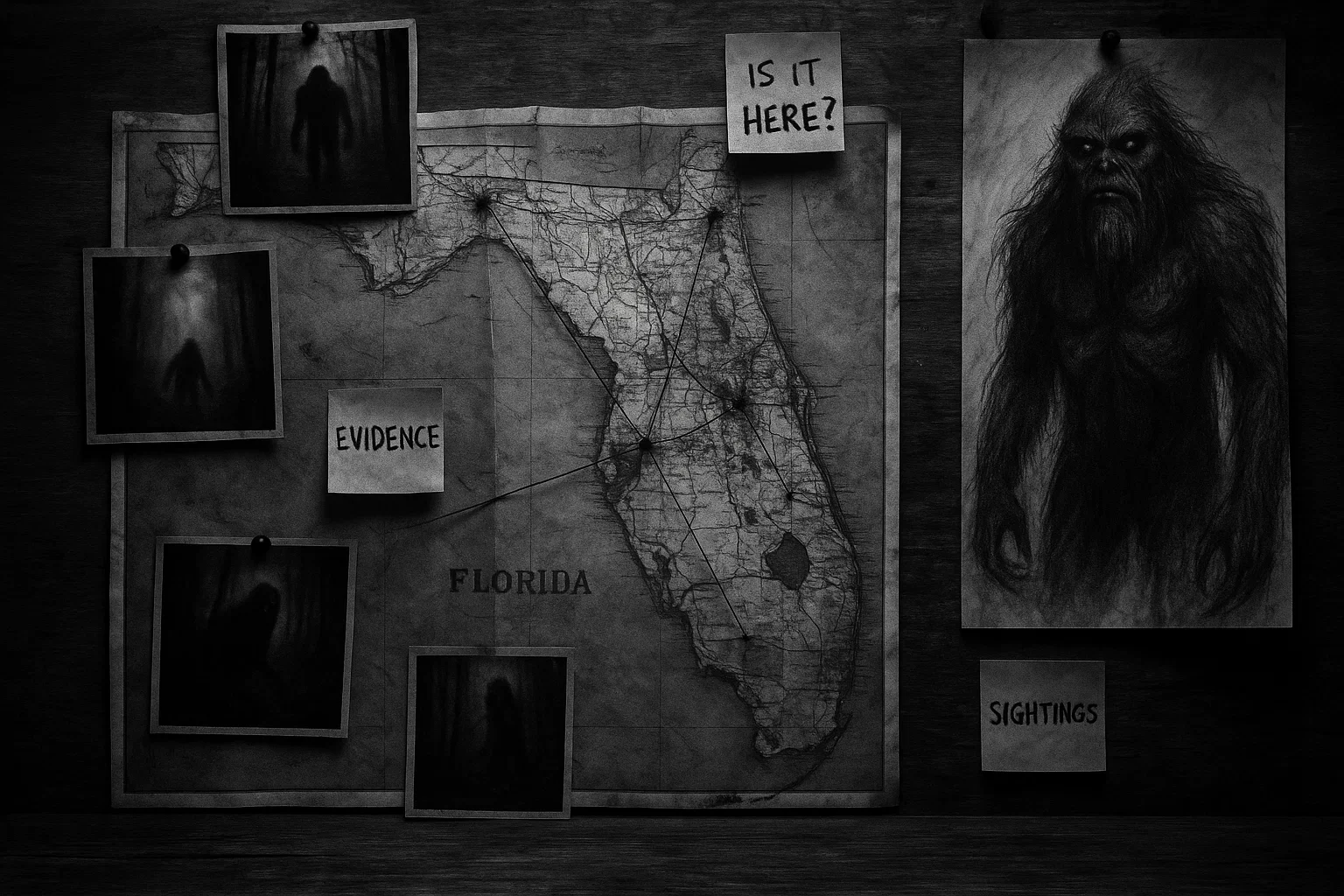Deep in Osaka’s bustling Dōtonbori district, where vibrant lights reflect off the canal, a chilling tale grips the Hanshin Tigers baseball team. The Curse of the Colonel Sanders, tied to the ghostly wrath of KFC’s founder, Harland Sanders, emerged in 1985 after fans tossed his statue into the Dōtonbori River.
This urban legend, rich with supernatural intrigue, blames the team’s long championship drought on this act. Known as a jinx or hex, it’s a story of fan frenzy, eerie tragedies, and a quest for redemption.
Let’s explore this mysterious saga, steeped in Japanese folklore and baseball superstition.
Table of Contents
What Is the Curse of the Colonel Urban Legend?
The Curse of the Colonel Sanders is a famous Japanese urban legend centered on the Hanshin Tigers, a beloved team in Japan’s Nippon Professional Baseball (NPB) league.
In 1985, fans, swept up in victory celebrations, threw a Colonel Sanders statue from a KFC restaurant into the Dōtonbori River. They believed this act angered the colonel’s spirit, cursing the team to years of failure. The Tigers didn’t win another Japan Series until 2023.
The legend links the team’s struggles to this statue, a cursed object symbolizing bad luck and supernatural vengeance.
This tale, often called the Colonel’s Curse, blends sports superstition with ghostly lore. Fans saw the team’s losses as proof of the haunting.
The statue, submerged in the murky river, became a focal point of paranormal fascination. Even today, it’s a cultural touchstone, tied to stories of vengeful spirits and bad omens.
You May Also Like: The Portrait of Doña Isabel de Porcel Curse: Real or Not?
History
The Curse of the Colonel began on October 16, 1985, when the Hanshin Tigers won the Central League pennant, their first since 1964. Fans flooded Ebisu Bridge in Osaka’s Dōtonbori district, a hotspot for celebrations.
In a chaotic tradition, fans chanted players’ names, and those resembling them jumped into the canal. For Randy Bass, the team’s American star with a record-breaking 54 home runs, no lookalike was found.
Instead, fans grabbed a Colonel Sanders statue from a nearby KFC, dressed it in a Tigers jersey, and hurled it into the river. The statue sank, and the curse was born.
The Tigers won the Japan Series in 1985 against the Seibu Lions, their first championship since 1938. But their luck soon turned. From 1986 to 2002, they finished last or near-last in the Central League for 18 years.
Fans linked this slump to the statue’s fate, believing Colonel Sanders’ ghost cursed the team. Efforts to recover the statue failed, with divers and dredging yielding nothing.
In 1987, a fire broke out near the Dōtonbori KFC, damaging the restaurant. Though no one died, locals whispered it was a sign of the colonel’s anger, adding a dark twist to the legend.
In 1992, a bizarre accident heightened the curse’s mystique. During a game at Koshien Stadium, a fan, Hiroshi Tanaka, aged 29, fell from the stands while drunk, suffering severe injuries. He claimed to have seen a “white-bearded figure” before falling, fueling rumors of a spectral sighting.
In 1998, another tragedy struck. A Dōtonbori canal boat capsized during a Tigers celebration, injuring six fans. No deaths occurred, but the incident deepened the curse’s ominous reputation.
The darkest moment came in 2003. After the Tigers won the Central League again, 5,300 fans swarmed Dōtonbori. In the chaos, Masaya Shitababa, a 24-year-old fan, was pushed into the canal and drowned.
His death on September 26, 2003, shocked Osaka, as police reported overcrowding and reckless behavior. This tragedy, tied to the same river where the statue sank, cemented the curse’s grim legacy. KFC Japan responded by moving statues indoors and bolting down replacements to prevent further incidents.
In 2002, during Japan’s World Cup celebrations, another Colonel Sanders statue in Kobe had its hands severed by vandals, seen as another bad omen.
Fans attempted rituals to appease the colonel’s spirit, including apologies to KFC managers and offerings at the river. Yet, the team lost the 2003 Japan Series to the Fukuoka Daiei Hawks, reinforcing belief in the curse.
On March 10, 2009, workers found the statue’s upper body in the Dōtonbori River. The next day, its right hand and lower body surfaced, though the glasses and left hand were missing. Restored, it was displayed at KFC Japan’s headquarters.
On March 8, 2024, KFC held a ceremonial burial for the statue, citing maintenance issues, hoping to end the curse. Despite this, the Tigers’ struggles continued until their Japan Series win on November 5, 2023. Fans celebrated by tossing a Colonel Sanders cosplayer into the river, a symbolic act to break the jinx.
Other eerie events tied to the curse include a 1995 Koshien Stadium flood, delaying games and damaging equipment, and a 2001 fan brawl near Dōtonbori, leaving two injured. These incidents, while not directly linked, fed the narrative of a haunted team plagued by misfortune.
You May Also Like: The Infamous Cursed Kleenex Commercial: Fact, Fiction, and Urban Legend
Theories
The Curse of the Colonel Sanders has sparked debate over its cause:
Paranormal Perspectives
Vengeful Spirit: The theory that Colonel Sanders’ ghost cursed the Hanshin Tigers is the legend’s core. Fans believe tossing the statue disrespected the colonel, a global icon. In Japanese folklore, spirits can linger when insulted, causing misfortune. This fits the curse’s timeline, as the team’s woes began post-1985. However, skeptics argue a foreign figure like Sanders wouldn’t haunt a Japanese team, as he had no personal connection to Osaka.
Cursed Object: The Colonel Sanders statue might hold supernatural energy. In some beliefs, objects tied to a person’s legacy can become cursed items. Throwing it into the Dōtonbori River, a place linked to celebrations and tragedy, may have unleashed this energy. This theory aligns with the statue’s recovery in 2009 and the team’s later success. Yet, it’s hard to prove an object can carry a curse without clear evidence.
Spiritual Retribution: Disrespecting the statue may have offended local kami (spirits) or other forces. In Japan, symbols, even commercial ones, can hold spiritual weight. The act at Ebisu Bridge could have angered these entities, cursing the team. This explains the string of tragedies, like the 2003 drowning. However, it lacks specificity, as many river incidents occurred without supernatural ties.
Psychic Connection: Some theorize Colonel Sanders had a mystical link to his KFC brand, even after death. His spirit might have influenced events to punish the desecration. This fits the curse’s focus on KFC-related incidents, like the 1987 fire. But it’s speculative, as there’s no evidence Sanders had such powers.
River’s Curse: The Dōtonbori River itself might be cursed, amplifying the statue’s disposal. Rivers in folklore often harbor spirits, and the canal’s history of accidents, like the 1998 boat capsizing, supports this. This theory ties the curse to the location rather than Sanders alone. However, it doesn’t explain why only the Tigers were affected.
Rational Perspectives
Coincidence and Superstition: The Tigers’ 18-year slump might be pure chance. Baseball teams often face losing streaks due to luck or strategy. Fans, seeking meaning, blamed the statue, creating a self-fulfilling prophecy. This fits, as slumps are common in sports. Yet, the timing of the 1985 incident and later tragedies makes coincidence less convincing.
Fan Psychology: Belief in the curse may have pressured players and fans, harming performance. Fear of failure can create a mental block, as seen in teams like the Chicago Cubs. This explains the team’s struggles post-1985, especially in high-stakes games. However, it doesn’t account for physical tragedies like the 2003 drowning.
Team Dynamics: Poor management, player trades, or injuries likely caused the Tigers’ losses. For example, after 1985, key players like Randy Bass left, and coaching changes disrupted the team. This theory is grounded in baseball’s competitive nature. Still, it ignores the cultural weight of the curse narrative.
Media Amplification: Media coverage kept the curse alive, shaping fan perceptions. Stories of the statue and tragedies like the 1992 fall or 2003 drowning gained traction, fueling superstition. This fits, as media often exaggerates sports narratives. But it doesn’t explain the team’s actual performance issues.
Statistical Anomaly: Long losing streaks are statistically possible. The Tigers’ drought from 1986 to 2002 could be a normal fluctuation in a competitive league. This theory dismisses supernatural causes entirely. However, the specific events tied to Dōtonbori make it less satisfying to believers.
You May Also Like: Japanese Horror: The Terrifying Ghost of Aka Manto
Curse of the Colonel Sanders vs Other Curses
Sports curses captivate fans, blending superstition, tragedy, and hope. The Curse of the Colonel shares traits with other jinxes, often tied to specific acts or figures:
| Curse Name | Affected Entity | Origin Event | Impact | Notable Events |
|---|---|---|---|---|
| Curse of the Bambino | Boston Red Sox (MLB) | 1919, Babe Ruth traded to Yankees | 86-year World Series drought | 2004 ALCS comeback against Yankees |
| Curse of the Billy Goat | Chicago Cubs (MLB) | 1945, Billy Sianis’ goat denied entry | 71-year World Series drought | 1969 collapse, 2003 Bartman incident |
| Madden Curse | NFL players on Madden cover | 1999, Garrison Hearst’s injury | Injuries or slumps after cover | Michael Vick’s 2004 injury |
| Sports Illustrated Jinx | Athletes on SI cover | 1954, Otto Graham’s slump | Poor performance post-cover | Deion Sanders’ 1992 struggles |
| Curse of Bobby Layne | Detroit Lions (NFL) | 1958, Layne traded after curse threat | 60+ years without a championship | 1991, 2014 playoff losses |
| Curse of Rocky Colavito | Cleveland Indians/Guardians | 1960, Colavito traded to Detroit | World Series drought | 1997 Game 7 loss |
| Australian Soccer Curse | Australian soccer team | 1969, unpaid witch doctor | Failure to qualify for World Cups | 2006 World Cup qualification |
| Derby County FA Cup Curse | Derby County (English football) | 1906, Romani curse after eviction | FA Cup drought | 1946 FA Cup victory |
| Lil B Curse | NBA players (Durant, Harden) | 2011, Lil B cursed Durant | Championship struggles | Durant’s 2017 title with Warriors |
| Curse of the Hex | Philadelphia Phillies (MLB) | 1964, fans stormed field | World Series drought | 2008 World Series win |
The Curse of the Colonel is unique for its link to a fast-food icon and a physical cursed object. Like the Curse of the Bambino, it tied a team’s failure to a specific act. Its resolution in 2023, with the Japan Series win, mirrors other broken curses, like the Cubs’ in 2016.
Is the Curse of the Colonel Real?
The Curse of the Colonel Sanders weaves a gripping tale of superstition, tragedy, and redemption.
For nearly 40 years, it explained the Hanshin Tigers’ struggles, from the 1985 statue incident to the 2003 drowning of Masaya Shitababa. The curse’s grip on fans created a psychological burden, possibly affecting players’ morale.
Yet, rational factors—poor team decisions, injuries, or plain bad luck—likely played a bigger role.
The Tigers’ 2023 Japan Series victory, their first since 1985, sparked joy in Dōtonbori. A fan dressed as Colonel Sanders was tossed into the river, a playful nod to breaking the jinx.
Today, the legend lives on as a cultural gem, blending Japanese folklore with baseball passion. Whether a ghostly hex or a fan-driven myth, the curse remains a testament to storytelling’s power in sports.

